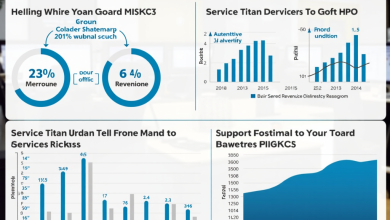Asana Q4 2025 Results: CEO Transition Disrupts Stock

Asana Reports Q4 2025 Results, Announces CEO Succession Plan
Asana (NYSE:ASAN) reported its Q4 fiscal 2025 financial results on March 10, 2025, beating profit estimates but disappointing investors with soft growth and the announcement of CEO Dustin Moskovitz’s planned departure. The stock plunged over 25% in after-hours trading following the earnings release and succession plan news. For further insights on the stock’s performance, visit this source.
Financial Highlights
- Q4 revenue of $188.3 million, up 10% year-over-year
- Full fiscal year 2025 revenue of $723.9 million, an 11% increase
- Positive free cash flow of $2.6 million for fiscal 2025
- Non-GAAP operating margins improved over 800 basis points year-over-year
Key Business Metrics
- Customers spending over $100,000 annually increased 20% year-over-year
- Non-tech verticals grew 15% year-over-year, outpacing overall growth
- Dollar-based net retention rate of 96%
CEO Succession Plan
CEO Dustin Moskovitz announced plans to step down after 15 years, triggering a search for his successor. Moskovitz will transition to the role of Chair once a new CEO is appointed. This leadership change, coupled with softer-than-expected growth guidance, led to a sharp decline in Asana’s stock price. For more detailed reactions and insights related to the CEO transition, check this analysis.
Strategic Initiatives
- Launched AI Studio to establish Asana as a multi-product company
- Focusing on expanding enterprise presence through partnerships with large system integrators
- Revamped partner program to drive channel growth
Outlook
- Q1 FY2026 revenue projected between $184.5 million and $186.5 million (7-8% growth)
- Expects to achieve non-GAAP profitability in Q1 FY2026
- Full-year FY2026 guidance: $782-$790 million revenue, non-GAAP operating margin of at least 5%
Challenges and Opportunities
Despite beating Q4 estimates, Asana faces challenges in balancing profitability with growth investments, navigating the CEO transition, and capitalizing on AI opportunities in a competitive market. The company’s stock performance reflects investor concerns about these challenges and the overall macroeconomic environment. Insights regarding these complexities can be found at this article.
Conclusion
Asana’s Q4 results and CEO succession announcement have created a complex picture for investors. While the company showed improvements in profitability and achieved positive free cash flow, concerns about future growth and leadership transition have overshadowed these achievements. The focus on AI innovation and enterprise expansion presents opportunities, but Asana must execute effectively to regain investor confidence. The coming quarters will be crucial in demonstrating the company’s ability to navigate these challenges and deliver on its profitability and growth targets. For a broader understanding of the market context and strategic recommendations, refer to this detailed review.




